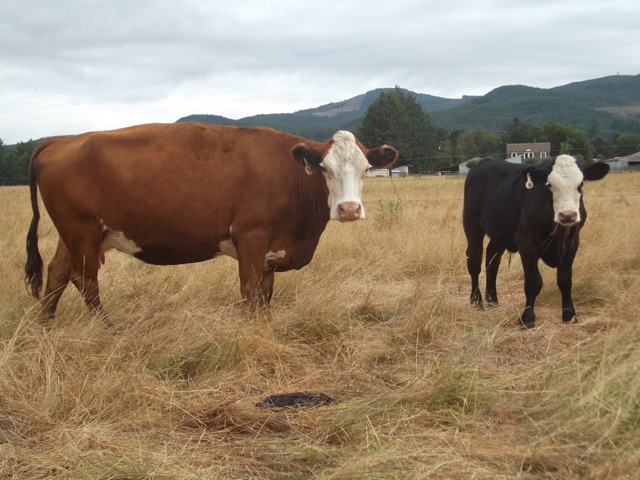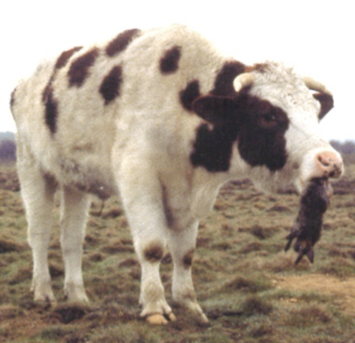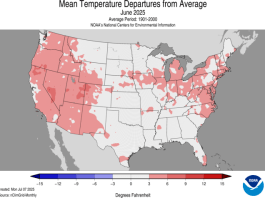“Boy, those cows could surely use some more milk.”
How often have we all heard that old line? Truth be told, we’ve spent the past fifty years breeding more and more milk genetics into America’s s beef herd, and the results have been stupendous, or maybe stupid, depending on where you stand. There are some great cows in America, but when I drive around the country, I see plenty of cows that are far too big, biologically inefficient, with udders that look like 5-gallon buckets. They require tremendous nutritional support and are structurally unsound. In herds that require a regular calving cycle, these cows are short-lived, and the main reason for their failures is an over abundance of milk.
My little ranching operation is a complicated business that includes taking care of other people’s cattle as well as our own purchased cattle. We own some land while renting other places. We manage yearlings, dry cows, cow-calf and some less popular classes too.
Nearly all of the cattle I purchase come from the local sale barn, which means I get a wide variety of genetics and backgrounds. My primary targets are young pregnant cows that I can calve out, sort, and re-sell in the fall. As a result, I get cows with a wide variety of milk production, and it’s interesting to see how things go for those cows.
 This year, I bought a nice young Whiteface cow, 6 months pregnant. She showed enough color to qualify as a cross-bred cow (a positive for a couple of reasons) and the price was right. She delivered a nice little black Whiteface bull and we were off and running. A couple weeks after she calved, I noticed that her bag just didn’t look quite right. On closer examination, I found that she only had two teats, the front ones. The rear teats were just vestigial buttons with no milk. Still, the calf was doing fine with only two teats, and there didn’t seem to be much I could do about the situation, so I just let them go. Through the early grazing season I worried each time I observed that pair, concerned that the calf would become stunted and turn into a little dink. After all, he only had ½ of a milk supply he was supposed to get. Still, whenever I saw them he was always grazing and seemed to be growing well. Come mid-summer, I weaned off some calves early and sent them to town, and he was right in the middle of the group, size wise.
This year, I bought a nice young Whiteface cow, 6 months pregnant. She showed enough color to qualify as a cross-bred cow (a positive for a couple of reasons) and the price was right. She delivered a nice little black Whiteface bull and we were off and running. A couple weeks after she calved, I noticed that her bag just didn’t look quite right. On closer examination, I found that she only had two teats, the front ones. The rear teats were just vestigial buttons with no milk. Still, the calf was doing fine with only two teats, and there didn’t seem to be much I could do about the situation, so I just let them go. Through the early grazing season I worried each time I observed that pair, concerned that the calf would become stunted and turn into a little dink. After all, he only had ½ of a milk supply he was supposed to get. Still, whenever I saw them he was always grazing and seemed to be growing well. Come mid-summer, I weaned off some calves early and sent them to town, and he was right in the middle of the group, size wise.
About the same time I bought that two-teated cow I brought a huge white cow home. She was starting to make a bag and was a striking figure of a cow. If she were bred right, she would produce a tremendous calf, and I could see dollar signs dancing in front of my eyes. When she calved I was horrified to find that some knucklehead had decided to breed this fine cow to a Brahman of some kind, so now I was left with a big, strong cow with a tremendous udder, four teats, and a genetically ridiculous calf. I was heart broken.
Next up is the little tale of a very attractive Red Angus cow, 8 months bred. She was only marginally too big, which meant that she would be easily saleable next fall. She delivered a very nice black calf that immediately jumped up and suckled. In the weeks that followed I noticed that the calf seemed to always be nursing, following his mother incessantly. Either that, or he was sleeping. Puzzled, I spent a few minutes watching that pair and soon determined that his mother had not four teats, not two teats, but no teats at all. It seemed that shortly after she freshened, her milk production declined to the point where she was producing virtually no milk. The calf, now a month old, was nursing as much as he could, but getting very little milk. He was also grazing now, and luckily, we were in the middle of the spring lush, with plenty of high quality forage. He survived—just barely—and by mid-summer he was independent and looked like a very lean, light stocker calf. His mother was fat as a pig.
So, what’s the lesson here? Heck if I know. But how about this: Of the cows in this little tiny sample set, one had too much milk and one had not enough. And the one in the middle was physically defective. From a marketing standpoint, even though each of these cows produced a calf and probably re-bred, none of them is saleable as a valuable reproductive animal, and each of them will end up in the butcher pen. Technically speaking, each of these cows was a failure, at least in my program.
So, what did I learn? Well, a couple of things, and that may be the biggest bit of profit from this little adventure.
First, the big white cow: I received affirmation that when you deal with sale yard cattle, there are no guarantees, and often, the outcomes are not quite what you hope for. In this case, the most striking cow in the group produced a marginal calf, due to genetics. But beyond that, she will finish the season in poor condition, partly because she is too large, but mostly because she gives too much milk. In the coming years, I will try to remember to avoid large-framed, heavy milking cows—the kind my parents truly loved—because they just don’t work in my grazing program. She’ll make a marginally attractive slaughter cow.
Next, the Red Angus cow: She will finish the grazing season in tremendous body condition, but her calf will be very marginal. Both of these outcomes are due to the fact that she produces extremely little milk. She’ll make a great slaughter cow.
 Finally, the two-teated Whiteface cow. She produced a good enough calf, perhaps just over middle-of-the-pack in value. She came through the grazing season in very good shape and is surely pregnant. She would be a fine replacement cow were it not for her defective udder. She will make a pretty good slaughter cow. If she were two or three frame scores bigger the cow buyers would like her a lot better.
Finally, the two-teated Whiteface cow. She produced a good enough calf, perhaps just over middle-of-the-pack in value. She came through the grazing season in very good shape and is surely pregnant. She would be a fine replacement cow were it not for her defective udder. She will make a pretty good slaughter cow. If she were two or three frame scores bigger the cow buyers would like her a lot better.
And so, all three cows were failures. But I will tell you this: I believe I’d take a herd of those two-teated cows any day. She was very moderate in frame, she produced a slightly better than average calf and I’m certain she bred back early. Truth be told, I hate to see her go.
Happy grazing!
PS: If you happen to drive by my place this winter and see a nice, slick Whiteface cow grazing up on the hill, please don’t mention that to my wife.




